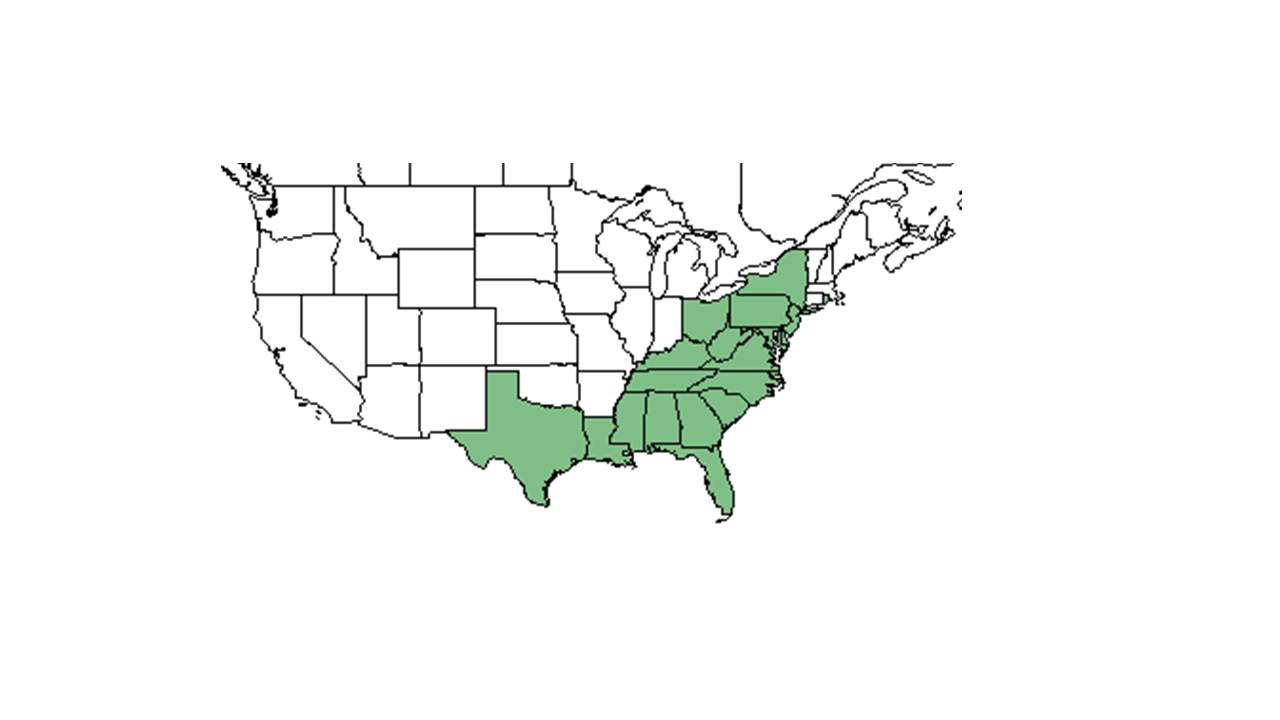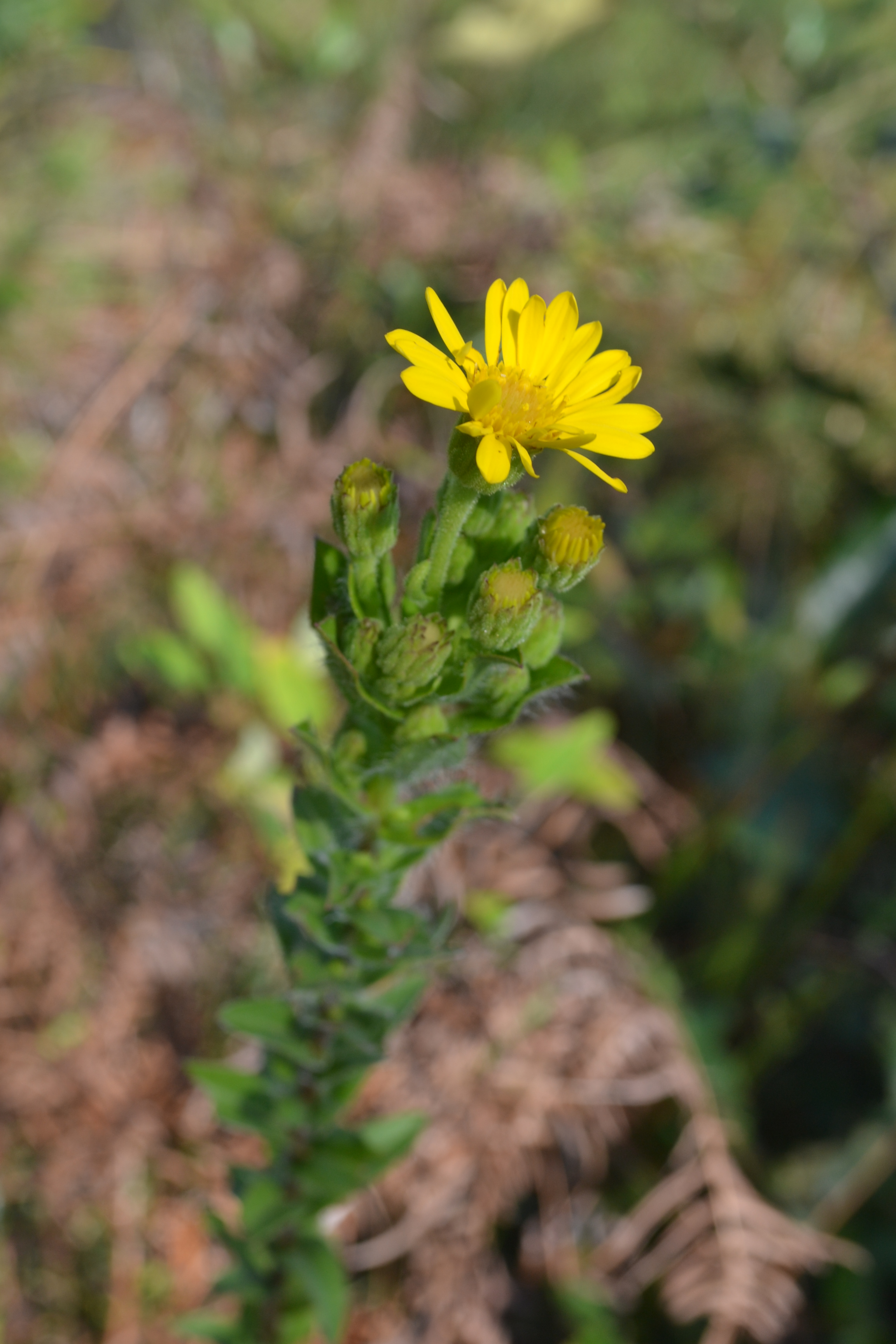Chrysopsis mariana
| Chrysopsis mariana | |
|---|---|

| |
| photo by Gil Nelson | |
| Scientific classification | |
| Kingdom: | Plantae |
| Division: | Magnoliophyta - Flowering plants |
| Class: | Magnoliopsida – Dicotyledons |
| Order: | Asterales |
| Family: | Asteraceae ⁄ Compositae |
| Genus: | Chrysopsis |
| Species: | C. mariana |
| Binomial name | |
| Chrysopsis mariana (L.) Elliott | |

| |
| Natural range of Chrysopsis mariana from USDA NRCS Plants Database. | |
Common name: Maryland golden-aster
Contents
Taxonomic notes
Synonyms: Heterotheca mariana (Linnaeus) Shinners; Chrysopsis mariana var. mariana; C. mariana var. macradenia Fernald
Varieties: none
Description
A description of Chrysopsis mariana is provided in The Flora of North America.
It tends to appear in large numbers after a site is burned.[1]
Distribution
Ecology
Habitat
It can live in humid and mild climates with plenty of rainfall throughout the year. It can tolerate temperatures ranging from 3 to 33 degrees Celsius. It is found in abundance in longleaf pine communities and also has grown in sand ridges and live oak floodplain forests.[2][1] Chrysopsis mariana is restricted to native groundcover with a statistical affinity in upland pinelands of South Georgia.[3] It has been observed to grow in open and shaded environments in moist loamy sands.[1] It's been found in disturbed areas such as sandy clearings within pine-hardwood forests, clear cut pine plantations, and along dirt roads.
Associated species include longleaf pine, turkey oak, and live oak.[1]
Phenology
C. mariana flowers in the fall.[4]It has also been observed in north Florida to flower January to March, May, July, October, and November.[5] It fruits in May and November.[1]
Seed dispersal
This species is thought to be dispersed by wind. [6]
Fire ecology
It is tolerant of fire.[2]
Conservation and management
Cultivation and restoration
Photo Gallery
References and notes
- ↑ 1.0 1.1 1.2 1.3 1.4 Florida State University Robert K. Godfrey Herbarium database. URL: http://herbarium.bio.fsu.edu. Last accessed: June 2014. Collectors: Loran C. Anderson, Wilson Baker, Bill Boothe, Kathleen Craddock Burks, R.K. Godfrey, Ann F. Johnson, R. Komarek, R L Lazor, John Morrill, R. A. Norris, Ginny Vail, and Jean W. Wooten. States and Counties: Florida: Calhoun, Franklin , Gulf , Jackson, Jefferson, Leon, Liberty, Taylor, Union, and Wakulla. Georgia: Thomas.
- ↑ 2.0 2.1 Kush, J. S., R. S. Meldahl, et al. (1999). "Understory plant community response after 23 years of hardwood control treatments in natural longleaf pine (Pinus palustris) forests." Canadian Journal of Forest Research 29: 1047-1054.
- ↑ Ostertag, T.E., and K.M. Robertson. 2007. A comparison of native versus old-field vegetation in upland pinelands managed with frequent fire, South Georgia, USA. Pages 109–120 in R.E. Masters and K.E.M. Galley (eds.). Proceedings of the 23rd Tall Timbers Fire Ecology Conference: Fire in Grassland and Shrubland Ecosystems.
- ↑ Kirkman, L. K., K. L. Coffey, et al. (2004). "Ground cover recovery patterns and life-history traits: implications for restoration obstacles and opportunities in a species-rich savanna." Journal of Ecology 92(3): 409-421.
- ↑ Nelson, G. PanFlora: Plant data for the eastern United States with emphasis on the Southeastern Coastal Plains, Florida, and the Florida Panhandle. www.gilnelson.com/PanFlora/ Accessed: 7 DEC 2016
- ↑ Kirkman, L. Katherine. Unpublished database of seed dispersal mode of plants found in Coastal Plain longleaf pine-grasslands of the Jones Ecological Research Center, Georgia.

